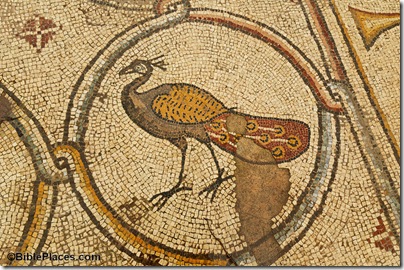Haaretz has a story and photo on the unveiling of a Byzantine-era glass mosaic from the Bird Palace.
Israel Antiquities Authority (IAA) has restored a unique 1,400-year-old glass mosaic, which was discovered in 2005 during excavation of the ancient Bird Palace in Caesarea, Haaretz has learned.
Yael Gurin-Rosen, head of the IAA’s glass department, said that the mosaic panel is the first of its kind to be excavated in Israel, and due to the quality of its preservation, given its age, and its gleaming, gilded craftsmanship indicating Christian origins, it is most likely the only one in the world.
You can read the rest and see the photo here.
HT: Yehuda Group.
Update: Joe Lauer sends along two related articles, one from the AP and one from the Israel Antiquities Authority. Both have nice photos.
Update #2: Infolive.tv has a short video showing the glass mosaic. There is some confusion in terminology – this is a glass mosaic found in the “Palace of the ‘Bird Mosaic.'” The palace has many mosaics, some of which are birds, and which you can see from above at 15-20 seconds into the video. The photos below are from this palace.



